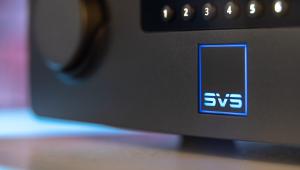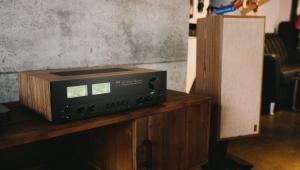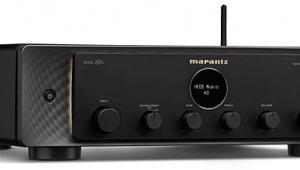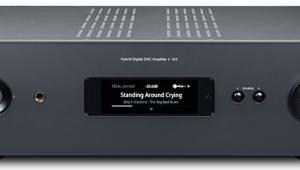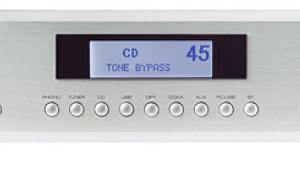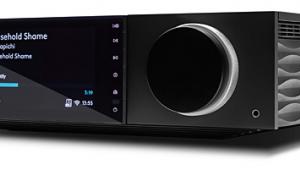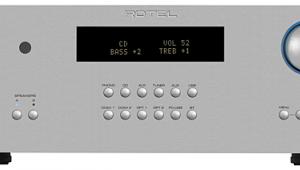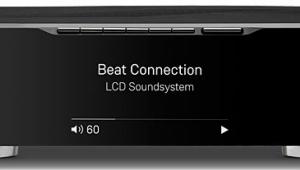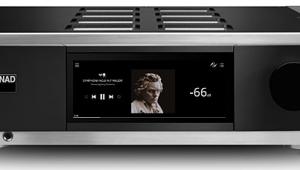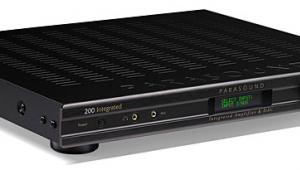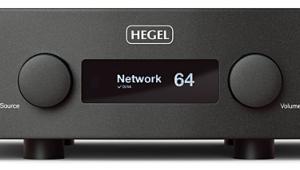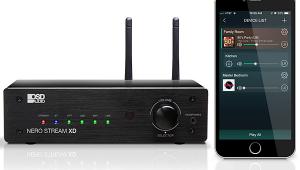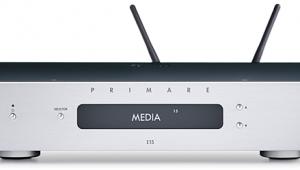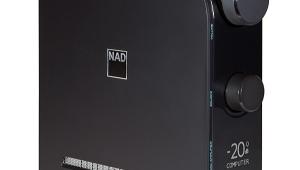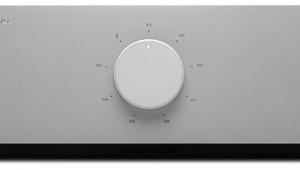Parasound NewClassic 200 Integrated Amplifier Review Page 2
 With little doubt remaining that the 200 Integrated was sonically legit, I moved it over to my big system and tasked it with driving my aged-but-excellent Energy Veritas 2.2i, a compact, three-way standmount design from the Canadian brand's long-ago, pre-Klipsch days. This speaker's low sensitivity but amiably stable impedance makes it a fair test for a wide range of amplifiers (one big reason I keep them around): power-hungry, but not so unrealistically current-sucking as to rule out real-world listeners whose values prohibit dedicated 20-amp circuits, CNC-milled amplifier stands, or inch-cross-section cabling.
With little doubt remaining that the 200 Integrated was sonically legit, I moved it over to my big system and tasked it with driving my aged-but-excellent Energy Veritas 2.2i, a compact, three-way standmount design from the Canadian brand's long-ago, pre-Klipsch days. This speaker's low sensitivity but amiably stable impedance makes it a fair test for a wide range of amplifiers (one big reason I keep them around): power-hungry, but not so unrealistically current-sucking as to rule out real-world listeners whose values prohibit dedicated 20-amp circuits, CNC-milled amplifier stands, or inch-cross-section cabling.
What I heard was what I expected: the 200 Integrated had plenty of grunt to move the Veritas 2.2i to realistic levels on either full-orchestra or rock material. A challenging recording like the pre-12-tone Schoenberg's massively post-romantic, Mahler-on-acid Pelléas et Mélisande (24/96 FLAC, Qobuz), played by the Berlin Philharmonic with Karajan at the helm, managed to both unpick the impossibly dense strands and reproduce the relentlessly repeating climaxes without congestion and with goosebumps-inducing dynamics. After that, a boogie classic like Willie Dixon's "Mellow Down Easy" played by the Paul Butterfield Blues Band (24/96 FLAC, Qobuz) was no challenge even at band-room volume: the sound was propulsive and intense, yet clean and punchy, and clearly retaining the record's homespun room sound despite the primitive split-stereo mix.
Not having drunk the vinyl revival Kool-Aid, I don't spin a lot of LPs. Even so, my hoary but healthy Rega/Ortofon (moving-magnet) setup sounded just fine when connected to the 200 Integrated's phono input (I did not have a moving-coil cartridge on hand to try its MC option). Noise was virtually nonexistent, and a borrowed copy of the latest remaster of Sgt. Pepper's Lonely Hearts Club Band renewed enough fascination from this shaving-mirror-familiar, yet new-sounding music to encourage some very close listening.

Ergonomics
I diligently scanned the gamut of the 200 Integrated's key features. Unlike a lot of competing integrated amps, Parasound gives you a real, full-sized remote control—and it's backlighted! It's also full- featured, with control buttons for tone, balance, subwoofer level, and direct-access input selection. Kudos to the company for going the extra mile here. The larger of the two knobs on the 200 Integrated's front panel is fixed to volume, while the smaller one, which normally rotates through the amp's seven inputs, cycles with a push through bass, treble, and balance adjustments.
Other convenience features on the 200 Integrated allow users to memorize a specific volume level for turn-on, and set a different, discrete one that's recalled by the remote's Vol Mem key. Input volume offsets can also be managed ±8 dB, so that a "loud" source can be reined in, or the opposite. Input labels follow the expected "Input 1/2/3/Aux," but these can be assigned any of 28 provided names such as BLU-RAY, LAPTOP, SONOS, VIDEO, and so on.
Conclusion
Simple, utilitarian, unfancy—these may sound like left-handed compliments, but in my lexicon they are the highest praise. (Anyway, "left-handed" is the ultimate encomium to us sinistrals.) Parasound's 200 Integrated is not just all of these but also audiophile and adaptable enough to get all the music out of your music, and all the functionality out of your system.
- Log in or register to post comments

